In the past, I’ve written about several of France’s most infamous serial killers (The Parisian Bluebeard is Guillotined (click here to read) and Dr. Jekyll and Mr. Hyde (click here to read). I thought with our blog today, we’ll move on to Berlin and introduce you to the “S-Bahn” serial killer. (The Berlin S-Bahn is a rapid transit railway system akin to the RER, the Paris suburban train line⏤the U-Bahn is Berlin’s underground railway system.)
Like his French counterparts, this German killer met the same fate.
Did You Know?
Did you know that Hugo Boss (1885−1948) was a fanatical Nazi? Boss was a German fashion designer and founder of Hugo Boss AG. Prior to serving in the German army during World War I, Boss ran his parents’ lingerie shop in Metzingen, Baden-Wuerttemberg (southwest Germany). After the war, Boss returned to Metzingen and started his own company beginning with the creation of shirts, jackets, and work clothing. Boss joined the National Socialist German Worker’s Party (NSDAP), or Nazi party in 1931 after more than three years of supplying the NSDAP with uniforms for Hitler’s Sturmabteilung (SA), or “Brownshirts.” He immediately became a sponsoring member of the Schutzstaffel (SS) and over the next ten years, Boss joined various Nazi sponsored organizations resulting in greater revenue for his company.
While the black uniforms of the SS were designed by members of the Schutzstaffel, the Hugo Boss company manufactured them (and likely had input to the design). By 1938, the company turned its attention to creating and manufacturing uniforms for the Wehrmacht, Hitler Youth, and the Waffen-SS (i.e., the armed division of the Schutzstaffel). About 180 Polish and French women were forced to work as slave labor in the Hugo Boss factory.
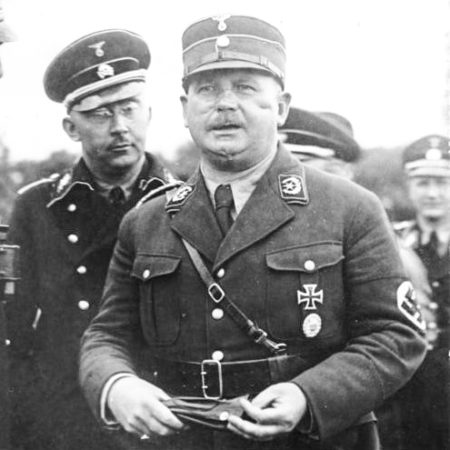
During the denazification process after the war, Boss was categorized as an “Offender” who profited from the Nazis and the war. However, upon appeal, he was re-classified as a “Follower” but still banned from running the business (his son-in-law took over). Why did it take until 2011 for the company to issue an apology for its role in the war and the use of forced labor? I could not find a section in the company’s website about its history or founder. This is not surprising. Most German companies do not highlight their activities or affiliations during the rise of the Third Reich or World War II (click here to read the blog, An African American in Paris).
I’d like to thank Martin B. for sharing the story of Hugo Boss with me and suggesting we incorporate it into one of the blogs.
Paul Ogorzow
Paul Ogorzow (1912−1941) was born in East Prussia (now Poland). He was the illegitimate son of a farm worker, Marie Saga. By the time he was twelve, Paul had been adopted by Johann Ogorzow and Paul eventually took Johann’s surname as his own. Working in a steel foundry, Ogorzow joined the Nazi party in 1931 and became a member of Hitler’s paramilitary Sturmabteilung (SA), or “Brownshirts.” After the Nazis took power in 1933, Ogorzow received promotions ultimately ending as a Scharführer, or SA squad leader. One year later, Ogorzow was hired to work for the national railroad, Deutsche Reichsbahn.
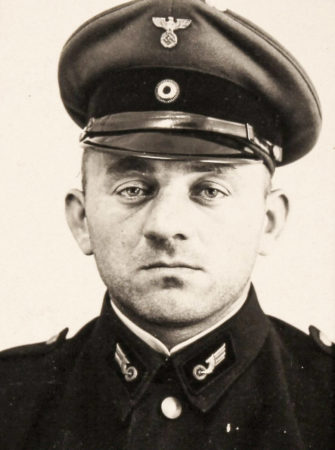
In 1937, Ogorzow married, and the couple had three children. They lived in a working-class area of Berlin but eventually moved to a more upscale neighborhood. Ogorzow continued being promoted at work and he was frequently seen gardening in his backyard and playing with the children. While at work, Ogorzow was well-regarded by his peers. Much of his work as an assistant signalman centered around Zobtener Straße where the S-Bahn meets the VnK Railway.
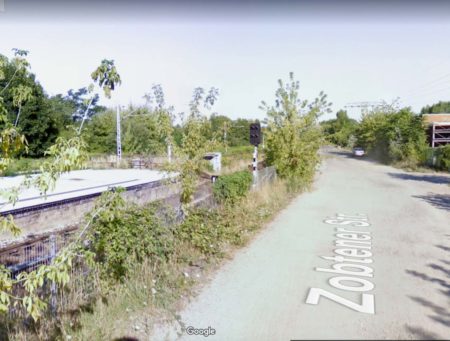
A rather ordinary man, wouldn’t you say?
Early First Phase
Ogorzow’s murderous crime streak was committed over a two-year period beginning in August 1939 until he was arrested on 12 July 1941. He began by assaulting and raping women in the Friedrichsfelde district of Berlin. Ogorzow targeted women whose husbands were serving abroad in the German military. He would choke, threaten with a knife, or bludgeon these solitary and vulnerable women but in the beginning, murder was not part of his modus operandi. The Berlin police ultimately reported thirty-one cases of rape or other sexual assaults in the Friedrichsfelde district that were connected to Ogorzow. Most of the surviving victims identified their assailant as wearing a railroad worker’s uniform.
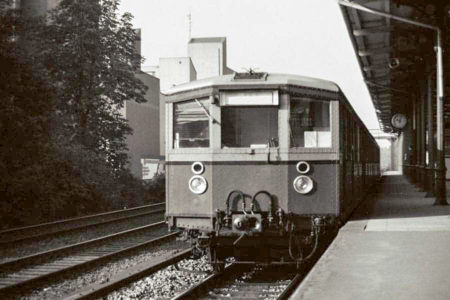
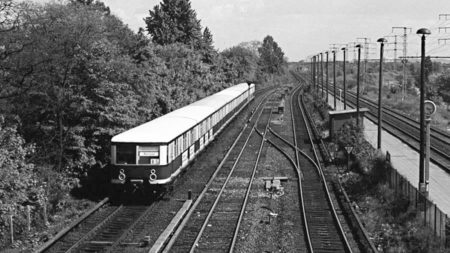
During the latter period, Ogorzow began to attempt to murder his targets. Three women were attacked and stabbed but survived. (They later testified at Ogorzow’s murder trial.) He began to target and rape his victims on the S-Bahn trains. One woman was raped and bludgeoned on a train, but she survived because Ogorzow believed she was dead when in fact, she was unconscious. About that time, he began throwing the bodies off the moving train but in some instances, several victims were found still alive.
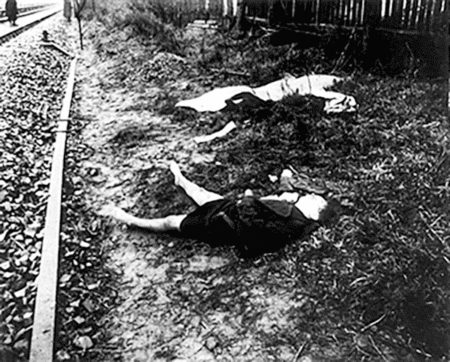
On one occasion, Ogorzow attempted to rape one woman on the S-Bahn but did not know her husband and brother-in-law were nearby, and they came to her rescue when she began to scream. They beat up Ogorzow but he was able to escape. At that point, Ogorzow decided to change his tactics.
Second Phase
In October 1940, Ogorzow decided to “work” the nine-kilometer (5.6 miles) S-Bahn line between the Rummelsburg train yard and the Friedrichshagen rail station. He would wait until one of the rail cars was empty except for a solitary woman. He wore his train uniform because the potential victim would not be suspicious of a rail worker approaching her to ask to see her ticket. Once he distracted the woman, he would attack by either strangling, stabbing, or crushing her skull with a thick piece of telephone cable or iron bar. It wasn’t long before railroad workers began to discover the bodies of Ogorzow’s victims alongside the rail tracks. Several of the women thrown off the moving train were found alive. However, none of them survived more than a few days in the hospital.
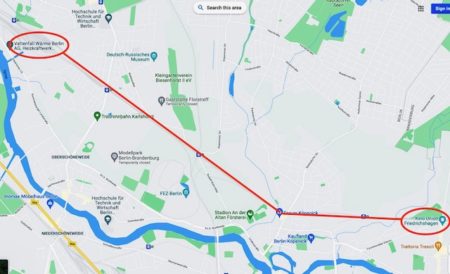
By February 1941, the Kriminalpolizei began to piece together and connect the dots based on autopsy reports. The police analysis determined the same individual was responsible for all the murders, and it pointed to someone working for the Deutsche Reichsbahn.
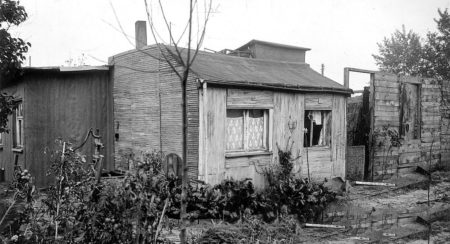
Kriminalpolizei
The Kriminalpolizei (KriPo), or Criminal Police reported to the Reich Security Main Office (RSHA) of the Nazi regime. The RSHA was led by Reinhard Heydrich (1904−1942) until his assassination by foreign agents. Also reporting to Heydrich were the Gestapo, Schutzstaffel (SS), Sicherheitsdienst (SD), Ordnungspolizei (i.e., uniformed police), Sicherheitspolizei (SiPo), and Geheime Feldpolizei (i.e., the Nazi secret field police). The KriPo was part of Amt V (Department 5) of the RSHA and led by SS-Gruppenführer Arthur Nebe (1894−1945).
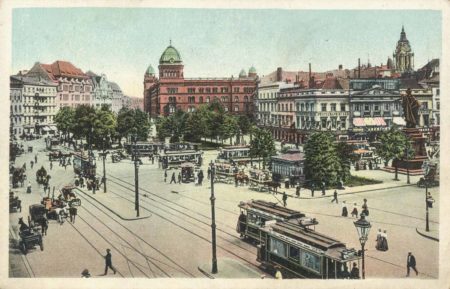
The KriPo used plainclothes police, detectives, and agents to deal with three primary types of crimes: rape, murder, and arson. Its agents worked closely with the Gestapo, the Ordnungspolizei, and the Geheime Feldpolizei. The KriPo also supplied the men for the Einsatzgruppen and Nebe at one time, commanded one of the mobile execution groups in Poland. (Nebe was executed by the Nazis as one of the conspirators of the July 1944 plot to assassinate Hitler.)
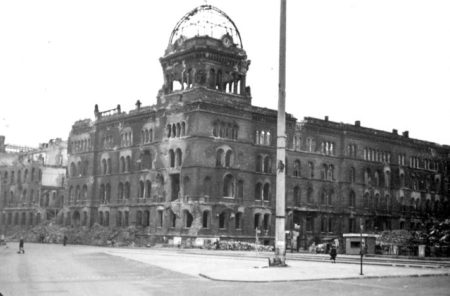
KriPo Investigation
The KriPo detectives were able to interview several survivors of Ogorzow’s assaults. Each of them described their assailant as wearing the black uniform of a railroad worker. By December 1940, more crimes were being reported and they were all covered with Ogorzow’s “fingerprints.”
The Berlin homicide unit was led by SS-Hauptsturmführer Wilhelm Lüdtke (1886−1957) and he personally took charge of the investigation. There were eight thousand railroad workers and after learning the killer always wore a railroad uniform, Lüdtke ordered the interviews of about five thousand men. (The KriPo eliminated anyone not matching the description given by the survivors.) Unaccompanied women were now escorted, female detectives were used as bait, and other KriPo agents went undercover as railroad workers. Ironically, Ogorzow volunteered to escort women at night. (There were no attacks recorded at the time.) As police activity increased, Ogorzow went into a hibernation period beginning in February 1941 but reemerged on 3 July 1941 when he murdered his last victim in the Friedrichsfelde area.
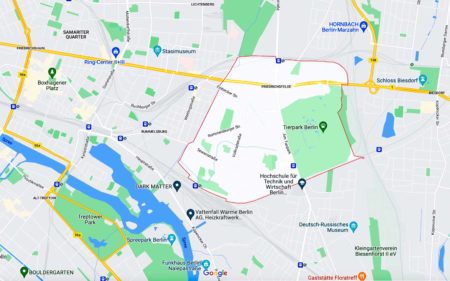
Arrest
Probably the single most important behavior encouraged by the Nazis was denouncement or informing the authorities on someone. Citizens were told they must denounce anyone suspected of being anti-Nazi or anti-Hitler. Turning people in became a rather common place occurrence (including parents). One of Ogorzow’s fellow workers noticed he had been acting strangely and reported Ogorzow to the police. Accused of abandoning work during work hours, Ogorzow used the excuse that he was visiting his mistress.
The police obtained Ogorzow’s uniforms and Lüdtke personally inspected them. He found bloodstains on the uniforms and Ogorzow was arrested on 12 July 1941. He was interrogated and put face-to-face with one of the surviving victims. Ogorzow confessed to the crimes but blamed his actions on alcoholism and a Jewish doctor he claimed had incorrectly treated him for gonorrhea.
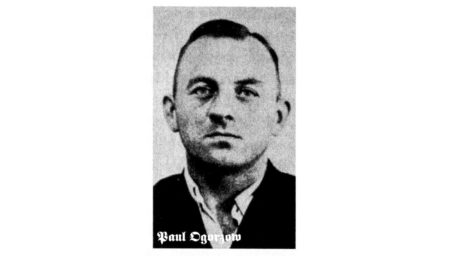
Ogorzow pleaded guilty to eight murders, six attempted murders, and thirty-one cases of assault including rapes. Sentenced to death on 24 July 1941, Ogorzow was executed by guillotine two days later at Plötzensee Prison.
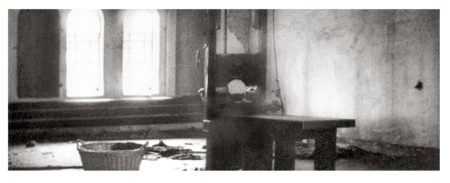
Investigative Obstacles
Wilhelm Lüdtke and his men were hampered in their investigation by circumstances of the war and Nazi policies.
- First, Nazi leaders could not accept the fact that the killer might be a “racially pure” German, or shockingly, a member of the Nazi party. It had to be the work of a foreign-born laborer or a Jew.
- Nazi propaganda would not allow coverage of the story because they felt it would create bad morale, especially for the men in the military who left their wives at home. This meant the investigation had to be carried out discretely and it was impossible for the police to obtain assistance from the general population. It also meant that women in Berlin were not aware of the danger of traveling alone at night on the S-Bahn.
- Blackout conditions prevailed at night due to British bombing. So, the windows of the S-Bahn rail cars were covered with blackout curtains. Ogorzow took advantage of the privacy it afforded him to carry out his crimes.
- Another issue was that the S-Bahn had a poor safety record. In other words, people were being hit or run over by the trains. The police had their hands full with a surplus of corpses.

The full extent of Ogorzow’s murderous route on the S-Bahn. Photo by anonymous (date unknown). ©️S. Fischer Verlag GmbH. Hosted on www.stadtschnellbahn-berlin.de. www.berlinexperiences.com
Our Next Blogs
Our next two blogs will be written by guest authors. Both posts deal with saving children from deportation and certain death in the Nazi extermination camps. Each author will be presenting their personal story albeit from a different perspective but with several common connections.
In the first post (12 March), you will meet the only Irish citizen to be honored by Yad Vashem as “Righteous Among the Nations.” The author was instrumental in uncovering Miss Mary’s story that led to her honor as “Righteous” as well as the role of the Quakers in their mission to save the children.
Two weeks later, the story of Miss Mary will be linked with the account of a young Jewish boy saved by another brave woman within the Quaker organization. The story of ten-year-old Édouard’s and his little sister’s escape to Switzerland will be told by Édouard’s daughter.
These stories will be so much more uplifting than ones on serial killers. I hope you’ll tune in.
★ Learn More About Paul Ogorzow ★
Moorhouse, Roger. Berlin at War: Life and Death in Hitler’s Capital. New York: Vintage Books, 2010.
Robinson, Matt. The S-Bahn Murderer: A Serial Killer in Nazi Berlin. Berlin Express. Click here to read the article.
Selby, Scott Andrew. A Serial Killer in Nazi Berlin: The Chilling True Story of the S-Bahn Murderer. New York: Berkley Books, 2014. https://www.scottselby.com
Disclaimer:
There may be a chance that after we publish this particular blog, the video links associated with the blog are no longer accessible. We have no control over this. Many times, whoever posts the video has done so without the consent of the video’s owner. In some cases, it is likely that the content is deemed unsuitable by YouTube. We apologize if you have tried to access the link and you don’t get the expected results. Same goes for internet links.
What’s New With Sandy and Stew?
I don’t know about any of you but I’m beginning to feel very encouraged that the world is beginning to open back up with respect to travel. Sandy and I have quite a number of trips planned this year beginning in April to Southern California to see two of the six grandchildren and ending in October with our second trip to Vietnam (this time, a river cruise).
However, the one trip we are looking forward to the most is our June trip to Europe. Over a two-week period, we will be in Paris, London, and Scotland. We will be visiting with our friends whom we frequently correspond with as well as visiting some Paris sites added at the last moment to the next book.
Thank you to all of you who subscribe to our bi-weekly blogs. It seems there isn’t a day that goes by where we don’t increase our readership. Please let your history buff friends and family members know about our blog site and blogs.
Someone Is Commenting On Our Blogs
I’d like to thank Frédéric D. for contacting us about his experiences as a young student in Paris. He attended Lycée Henri IV and frequented the Café Sussex. He was a regular and Madame Andrée was still running the café. Frédéric mentioned that she was very old and gentle, much like visiting with his grandmother. Madame Andrée was very willing to tell Frédéric the story of her wartime activities (click here to read the blog, The Sussex Plan and a Very Brave Woman). Her comment was always that what she did was “absolutely normal.”
We heard back from Geneviève M. regarding her new book, Les femmes de la Royal Navy: Leur combat pour la liberté 1917−1945. She told me the book was just published by Éditions de l’Officine. Geneviève first contacted us regarding our blog, The Wrens (click here to read). Congratulations Geneviève! Let me know when the English version comes out.
As we are now two months into the new year, it’s remarkable that Sandy and I receive, on average, one piece of correspondence per day from our readers. It’s a lot of fun hearing from everyone, even when they point out my mistakes (which we do appreciate and encourage). Our next two blogs are a result of someone’s feedback on a recent blog.
So, if you haven’t contacted us, we’d love to hear from you.
If there is a topic you’d like to see a blog written about, please don’t hesitate to contact me. I love hearing from you so keep those comments coming.
Why Would You Want to Buy Our Walking Through History Books?
Simple.
You like to travel and experience history and historical events. You like to see original buildings that had a significant impact on the people and events of the history you’re engaged with. You want to know the stories behind the brick and mortar in front of you.
The walking tour books are meticulously researched so you can go directly to those sites and learn about the building’s history as well as an introduction to some of the more interesting people associated with it.
We Need Your Help
Please tell your friends about our blog site and encourage them to visit and subscribe. Sandy and I are trying to increase our audience and we need your help through your friends and social media followers.
Thank You
Sandy and I appreciate you visiting with us. We have some exciting things on the horizon, and we’ll keep you updated as we go along.
Share This:
Follow Stew:
Find Stew’s books on Amazon and iBooks.
Please note that we do not and will not take compensation from individuals or companies mentioned or promoted in the blogs.
 Walks Through History
Walks Through History
Copyright © 2022 Stew Ross


Two thumbs up! Another well-researched read. Who would’ve guessed that during World War II Hugo Boss designed and manufactured Nazi uniforms and used slave-labor to do it? It was definitely news to me. The serial killer companion piece fits in perfectly. Apparently, black was in fashion among German railroad workers too. Dark times indeed.
Hi Greg; Thanks for your comment. Yes, dark times indeed. STEW
Hi Tom; Thanks for letting us know we made a mistake. I appreciate you forwarding the “real” Adrienne’s painting. We’ve updated the blog using your suggestions. STEW